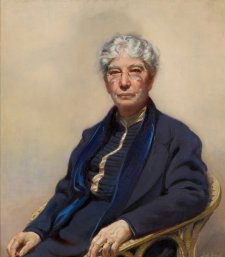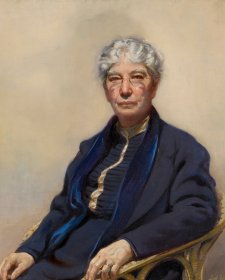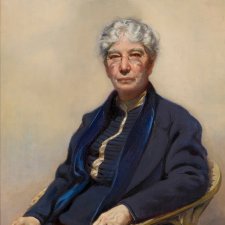Dame Mary Gilmore DBE (1865–1962), poet, journalist and social reformer, was born near Goulburn and had an itinerant childhood as her father moved the family around New South Wales for work. At sixteen she began working as a teacher in Wagga Wagga and other country towns before being transferred to Neutral Bay in 1890. She met Henry Lawson around that time and they had a close relationship until 1895, when she retired from teaching and moved to Paraguay, South America with followers of the utopian socialist William Lane. There she married William Gilmore, a shearer, and had a son, before settling in Casterton, Victoria. Gilmore was the first female member of the Australian Workers' Union, and from 1908 to 1931 championed a variety of social causes as editor of the women's page of the Australian Worker, including votes for women, children's welfare, aged and invalid pensions, and better treatment for Aboriginal people and returning servicemen. She also wrote for the Bulletin and the Sydney Morning Herald. Gilmore published the first of many collections of poetry in 1910 and she and her son moved back to Sydney two years later. In 1930 she published The Wild Swan, a book of verse decrying white settlers' ravaging of the land and indifference to Aboriginal culture; Under the Wilgas (1932) and subsequent works expanded on this theme. Between 1891 and 1961 at least thirteen portraits were made of Gilmore by various artists, an indication of her importance as a feminist and social crusader. She was made a Dame of the British Empire in 1937 in recognition of her contribution to Australian life and literature. Her State funeral in Sydney was the first for an Australian writer since that of her friend – possibly, briefly, her boyfriend – Lawson, 40 years earlier. She is featured on the reverse of the Australian $10 note and the Canberra suburb Gilmore is named after her.
- About us
- Support the Gallery
- Venue hire
- Publications
- Research library
- Organisation chart
- Employment
- Contact us
- Make a booking
- Onsite programs
- Online programs
- School visit information
- Learning resources
- Little Darlings
- Professional learning







